Namasia District and Taoyuan District in upstream area of Laonong River are indigenous settlements of Bunun, Kanakanavu, and Hla’alua while the downstream area, settlements of Rukai and Paiwan, is administered by Maolin District. Liouguei District, with smaller slope, forms the meeting point for indigenous and nonindigenous culture. Since its establishment in 1998, indigenous members of Feiying Rescue Squad have been playing an inevitable role.
Initially, the Squad was founded for making contribution to the society as a voluntary worker group by coordinating with government events and facilitating traffic control work in Liouguei. Rescues were only responded to traffic interruption caused by mudslides.
“Rescue requires to accumulate experience and without the financial support, it is not easy for a private organization to work for 21 years and become more professional,” recalled Chen Ming-Hua, President of Feiying Rescue Association. Especially, the devastating 921 Earthquake hit Central Taiwan in the second year after the establishment of the Association. Chen arranged about four excavators to depart directly from Liouguei, but highway control was implemented. At that time, both public and private rescue organizations had limited experiences about earthquake rescue and relief activities and on the site, the command system was very chaotic and inefficient.
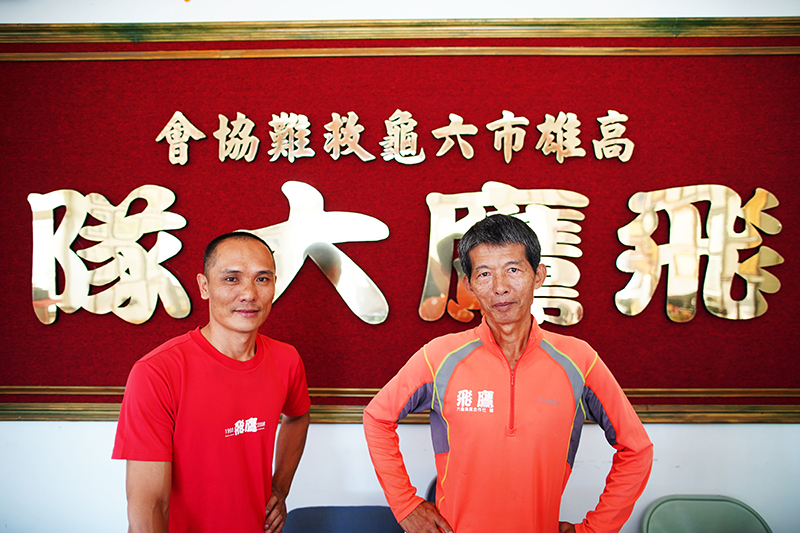
Hei Lung (left)and Chen Ming-Hua(right) are the key persons of the Squad, a frontline rescuer and mentor.
Indigenous Rescue
with Leading Endurance
Although the government has gradually developed its rescue capabilities and system, yet with limited governmental resources, Feiying Rescue Squad has been more flexible to attend to the public need. Chen said, “When a hiker was reported missing, his families often demanded help from private rescue teams since the government is unlikely to conduct unlimited searches. Even when the hiker was found dead, our team members would bring the body down to the mountain and give it back to the relatives.
Looking at the face of Chen Ching-Shan who stood next to him silently, Chen said, “Indigenous members have the strength over endurance and loading, in particular, for surviving in the wilderness during night time. He is the one that I can trust in every rescue!”
Chen Ching-Shan is Bunun who has been working in the Port of Kaohsiung. He joined Feiying Rescue Squad about 20 years ago when he retired from Special Forces of Kinmen. As a skillful rescuer, he is also a coach and each year, he leads new members for mountain hike training and has been nicknamed, “Hei Lung.”
After the joining of Hei Lung, Feiying during that time was giving only general rescue support to the government, yet as it became more experienced and skillful, Chen Ming-Hua decided to lead his men to work for the whole island. His men have been scattered around Taiwan for their own work and when there is a need, they will be called to rescue and relieve immediately.
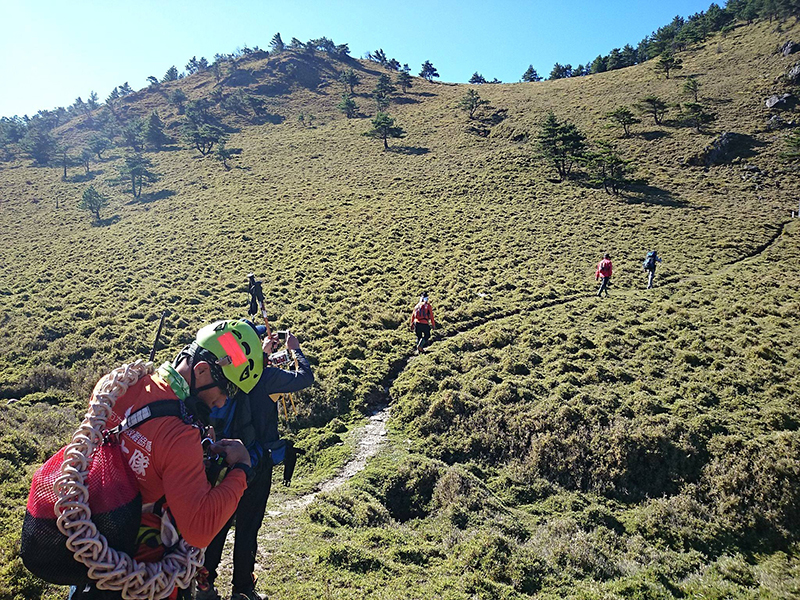

Feiying Rescue Squad, a voluntary mountain rescue organization, equipped with professional hiking and rescue skills.
Transition to
Specialized Mountain Rescue
There have been a limited number of specialized mountain rescue squads in Taiwan. Thus, in its initial stage, Feiying focused on mountain rescue work. Over the past decade, many skillful members joined the Squad and made it a prominent organization in Taiwan. But compared to general rescue assignment, mountain rescue requires more physical strength and endurance and is more time consuming. At present, the ratio of non-indigenous and indigenous members is 10 to1 indicating high recognition earned due to non-indigenous and indigenous experience learning and sharing. Feiying’s red shirt had been often spotted in rescue efforts of Taiwan’s major disasters including Typhoon Morakot, Weiguan Building Collapse, and Kaohsiung Gas Expositions.
“It is known that ‘footprints in the sand show where one has been’ but this is not quite easy for us to find a missing hiker in the mountain area. We need to know more about the missing hiker and find more clues,” pointed by Chen Ming-Hua. In recent years, more hikers were reported missing in remote mountain range less than 2,000 kilometers since people ignored risks of hiking related activities. For hikers, they often are not familiar with the wilderness and lose their directions.
Prior planning is very important for rescue and on the white board at the office, communication logs between the missing one and relatives were jolted down for members to trace all possible meanings from everything including cell phone messages. Their members sometimes found the missing one dead and Feiying members are no stranger to this pity. But when there is hope, they will continue their rescue to locate any missing hiker.
What impressed Hei Lung the most was once he received a rescue request to search a missing elderly who took his granddaughter back to his home in the mountain. The granddaughter reported to the policy alone. Feiying spent two days and found the old man without life signs. “Mountain trails present great challenges to hikers and rescuers and we need to repeatedly search all possible locations. Only with correct judgement, we are able to find the missing one sooner,” said Hai Lung. Time for them to find missing hikers is very limited and after ten days, policy and firefighting agencies have to close the case. But with a request of any family members, Feiying will continue searching. Both Chen Ming-Hua and Hei Lung pointed out the difficulty of mountain range rescue and relief. They always examine rescue processes and ignored details and messages to make each rescue more valuable.
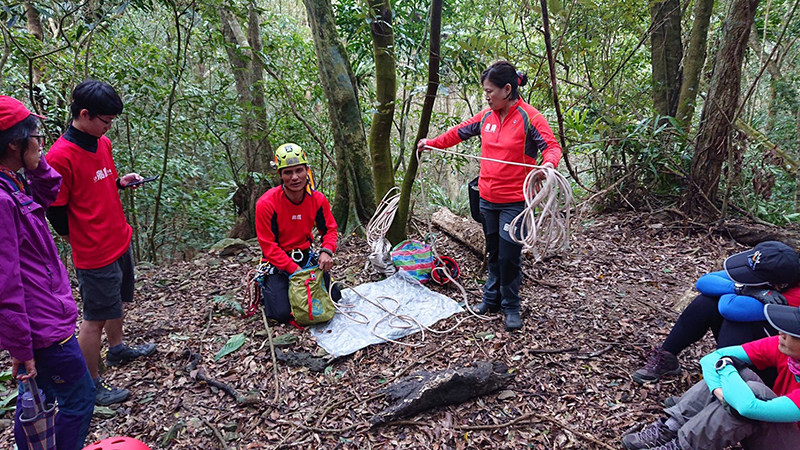
It shows how the Squad has been trained in the mountain range.
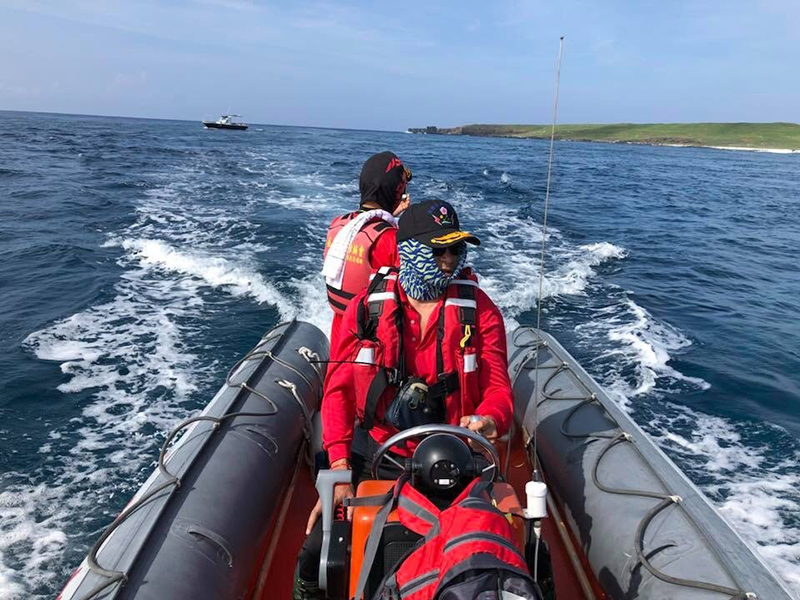
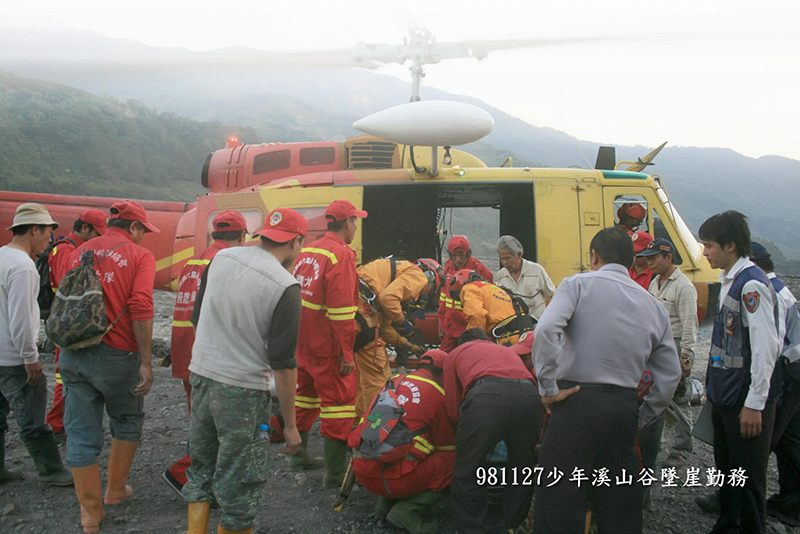

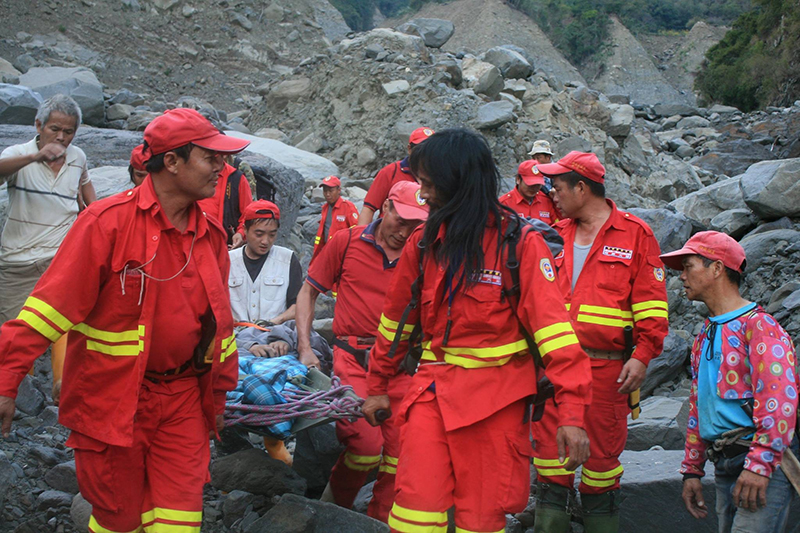
Feiying Rescue Squad offers comprehensive assistance to rescue operations since it masters all rescue characteristics and processes in all fields.
Saving Home
from Typhoon Morakot
Chen Ming-Hua recalled, “Typhoon Morakot was more devastating than the 921 earthquake according to my rescue and relief experiences over a decade.” In August, 2009, the extreme amount of heavy rain in several days caused severe flooding around Taiwan. Chen Ming-Hua took some of his members, seven speedboats, and raft operators for rescue. When they arrived, they saw the high flooding level equivalent to that of a three-story building and many victims were there waiting for help. Sharp objects raised under water created barriers for rescue and he said, “I was very concerned of safety of my men.”
Before they finished their relief and rescue in Jiadung, communications in Liouguei was interrupted. Chen then took his men home. When they approached to the end of National Highway No. 10, water level of Kaoping River soared and they could not identify their way home. They were rescued with a falling cable. It took more than one month for Qishan, Liouguei, Taoyuan, Maolin, and Namasia to be rescued and relieved.
Now in Liouguei, a visitor can overlook the Office from a bird's eye view of “Feiying Squad” on the iron roof written by Chen Ming-Hua in person after Typhoon Morakot. At the office, Four-Wheel Drive, mountain motorcycles, speedboats, cables, drones, sleeping bags, raincoats, and tents are scattered and donated by the private sector for emergent and needy rescues.
“We rely devices on the plain and humanity in mountains,” stated Chen. Along with the advanced development of science and technology, drones and GPS equipment offer great assistance but humanity reasoning and mountain and wilderness trainings of professional techniques are required. That is why Feiying has been highly recognized and praised.
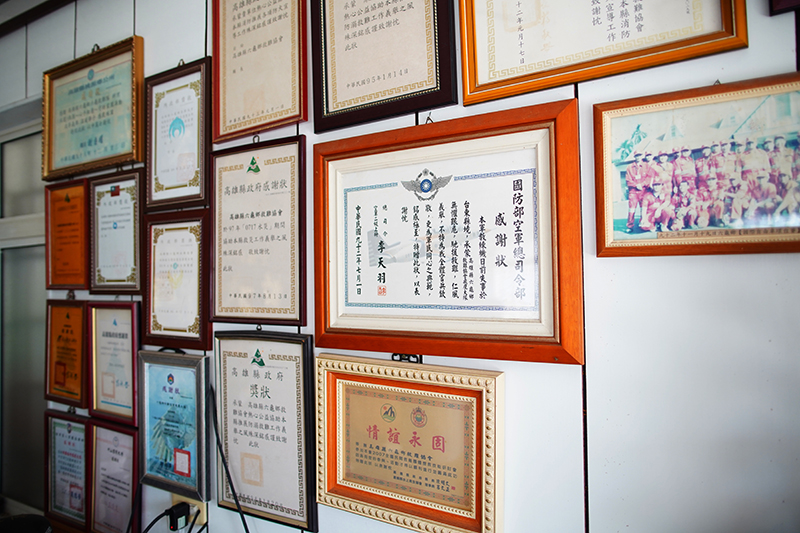
Letters of appreciations were sent to recognize Feiying’s resecue efforts.




